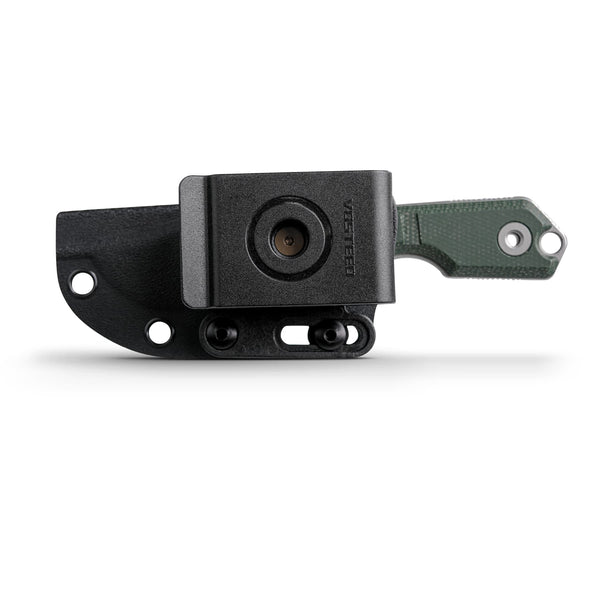Unlock the Secrets of Choosing the Perfect Neck Knife!
Neck knives are becoming increasingly popular among outdoor enthusiasts, survivalists, and everyday carry (EDC) aficionados. These compact, lightweight knives are designed to be worn around the neck, offering a unique blend of accessibility and practicality. With a neck knife, you have a reliable cutting tool within easy reach, making it an ideal choice for various activities such as camping, hiking, or even daily tasks. However, with so many options on the market, selecting the right neck knife can be challenging. It's essential to consider your individual needs and preferences to find a knife that suits your lifestyle perfectly.

Understanding Neck Knives
A neck knife is a small, fixed-blade knife typically worn around the neck with a cord or chain. Unlike traditional pocket knives, neck knives are designed for quick access and often feature a minimalist design. They usually have a blade length of 2 to 4 inches, making them compact enough for everyday carry while still being functional for various tasks. One of the key differences between neck knives and other types of knives is their carry method; the neck knife's position allows for easy retrieval and deployment, making it an excellent option for those who prioritize accessibility. Additionally, neck knives are often lightweight, which adds to their appeal for outdoor activities where every ounce counts.
Key Features to Consider
When choosing a neck knife, several essential features should be considered to ensure you select a knife that meets your needs. Blade material is a crucial factor, as it affects durability and cutting performance. The length of the blade is another important consideration; a longer blade may offer more versatility, while a shorter blade might be more suitable for discreet carry. Handle design also plays a significant role in usability, as an ergonomic handle can enhance grip and control. Finally, the sheath type is vital for safety and accessibility, as a well-designed sheath will ensure the knife is secure and easy to access when needed.
Blade Material
Neck knives can be made from various blade materials, each offering distinct advantages and disadvantages. Stainless steel is a popular choice due to its corrosion resistance and durability, making it ideal for outdoor use. However, it may require more maintenance to keep the edge sharp. On the other hand, high-carbon steel blades are known for their excellent edge retention and ease of sharpening, but they are more prone to rust if not properly maintained. Additionally, some neck knives feature ceramic blades, which are incredibly sharp and lightweight but can be more brittle and prone to chipping. Understanding these materials will help you make a more informed decision based on your intended use.
Sheath Design
The sheath design is crucial for both safety and accessibility when using a neck knife. A well-designed sheath will securely hold the knife in place while allowing for quick and easy retrieval. Common sheath materials include Kydex, nylon, and leather, each offering different benefits. Kydex sheaths are durable and water-resistant, making them ideal for outdoor environments, while nylon sheaths are lightweight and often more comfortable to wear. Leather sheaths, while stylish, may not provide the same level of protection against moisture. Additionally, consider the attachment method; some sheaths feature a simple neck cord, while others may have clips or loops for added versatility.
Comparing Prices and Features
When shopping for a neck knife, it's essential to compare various options in terms of features and price to ensure you're getting the best value for your investment. Start by identifying your must-have features based on your intended use, and then create a list of potential knives that meet those criteria. Once you have a shortlist, evaluate the performance of each knife through reviews and customer feedback, focusing on usability and durability rather than brand names. This will help you make an objective decision based on the knife's merits rather than marketing hype.
Budget Considerations
Your budget will significantly influence your choice of neck knife. While it's tempting to opt for the cheapest option available, investing a little more can often lead to a better-quality knife that will serve you well in the long run. Fortunately, there are plenty of quality neck knives available across various price ranges. To find the best options within your budget, look for sales, promotions, or even second-hand knives that may still be in excellent condition. Remember, a higher price doesn't always equate to better quality, so take the time to research and find the best value for your money.
Final Thoughts on Selecting Your Ideal Neck Knife
Choosing the right neck knife is a personal journey that requires careful consideration of your specific needs, preferences, and budget. By understanding the features that matter most and comparing various options, you can find a neck knife that not only meets your requirements but also enhances your outdoor or everyday experience. Remember to take your time and do thorough research before making a purchase, as the right knife can be a valuable tool in your everyday carry arsenal. Happy shopping!








